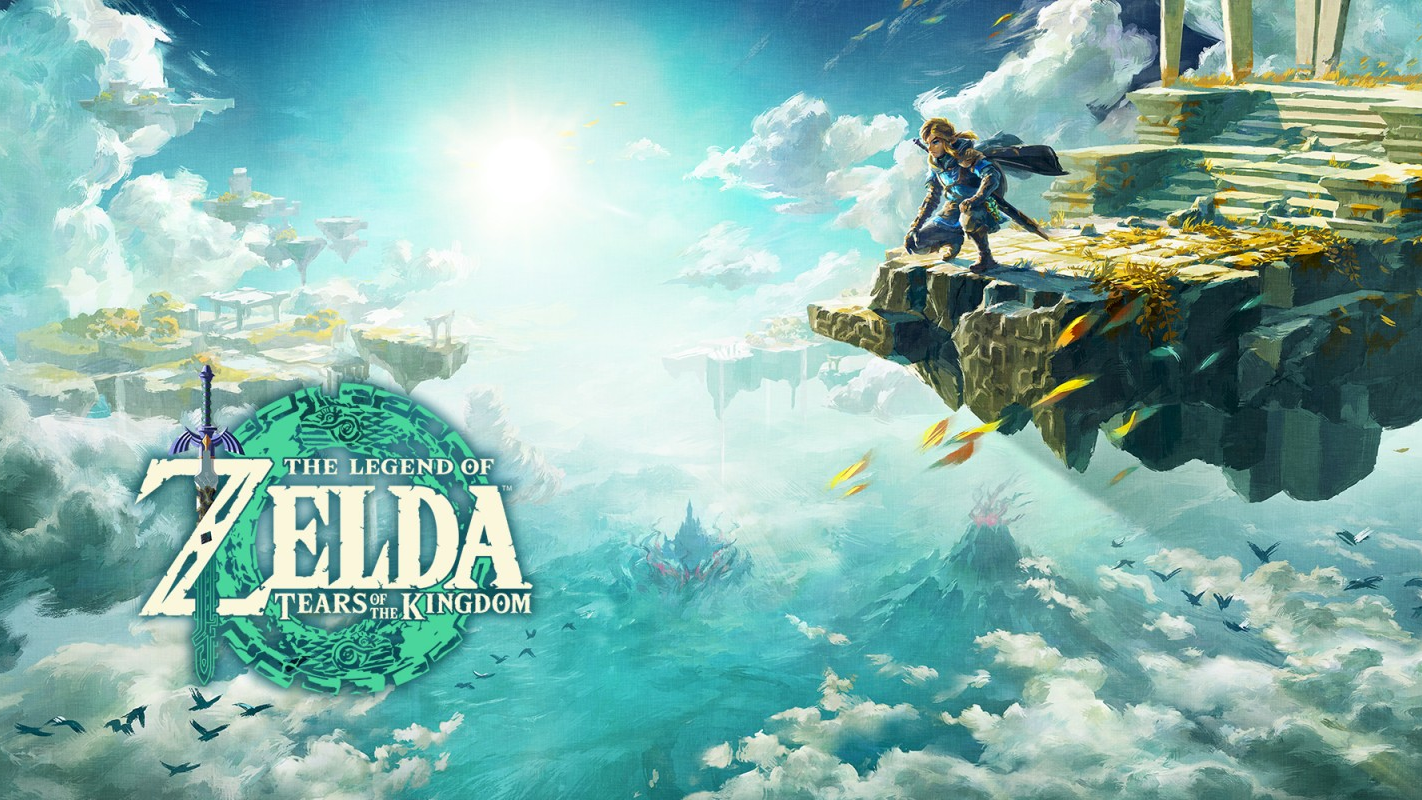
Much like how art imitates life, so too shall life imitate art. In this case one more thing getting in my way of finishing the newest Zelda and writing this review, much like how I wanted to find just one more shrine before I actually finished the game. But in order to actually get this review out in a… somewhat timely manner it has to end eventually. While it has been a pretty extensive 100 hours, I’m already wanting to dive back in to find what I missed or start another playthrough. Grab your paragliders boys and girls, it’s time to jump into what I thought of Tears of The Kingdom (ToTK).
Gameplay
I think the most important thing to start with here is the gameplay; for some Breath of The Wild (BoTW) was a wide departure from previous Zeldas. While I do prefer more traditional Zeldas, I enjoyed my time in BoTW, and the small changes they’ve made for ToTK pushes it a notch above. However, before we continue on I do feel I should point out that every day I played ToTK I used my Zelda amiibos. That may make my experience different from someone who is amiiboless, and I did feel the need to mention it here. Why did I feel that need? Because I’ve heard some people say weapons decay faster here than in BoTW and are much less enjoyable. But… I don’t think I can agree with that. Link has a whole new set of abilities: gone are Stasis, Bomb, Cryonis and Magnesis; in their place you get Recall, Fuse, Ultrahand, Ascend and Autobuild. And while initially one may really want the BoTW runes back, (I certainly did) eventually you’ll see the new runes are superior (although I do miss Bomb). To start with, one of the runes you’ll use the most is Fuse. Fuse will, well, fuse items you find throughout the world onto your weapons. At first the benefits will be small; as you get further and further into the game you’ll get to make some truly powerful weapons. You can even do this with the Master Sword. I know the power of the Master Sword in BoTW was a point of contention, but now you can fuse something onto it to make it stronger. Fusing can also make weapons last longer, but not all fuses accomplish this. Some items, like bones, will break quite rapidly. But Bokoblin horns and Construct parts will last a long time, especially on extra durable weapons. Some weapons will give even more strength if you fuse specific items onto them, for example the Construct parts on Zonai weapons. There’s many other examples, but I don’t want to spoil everything after all.
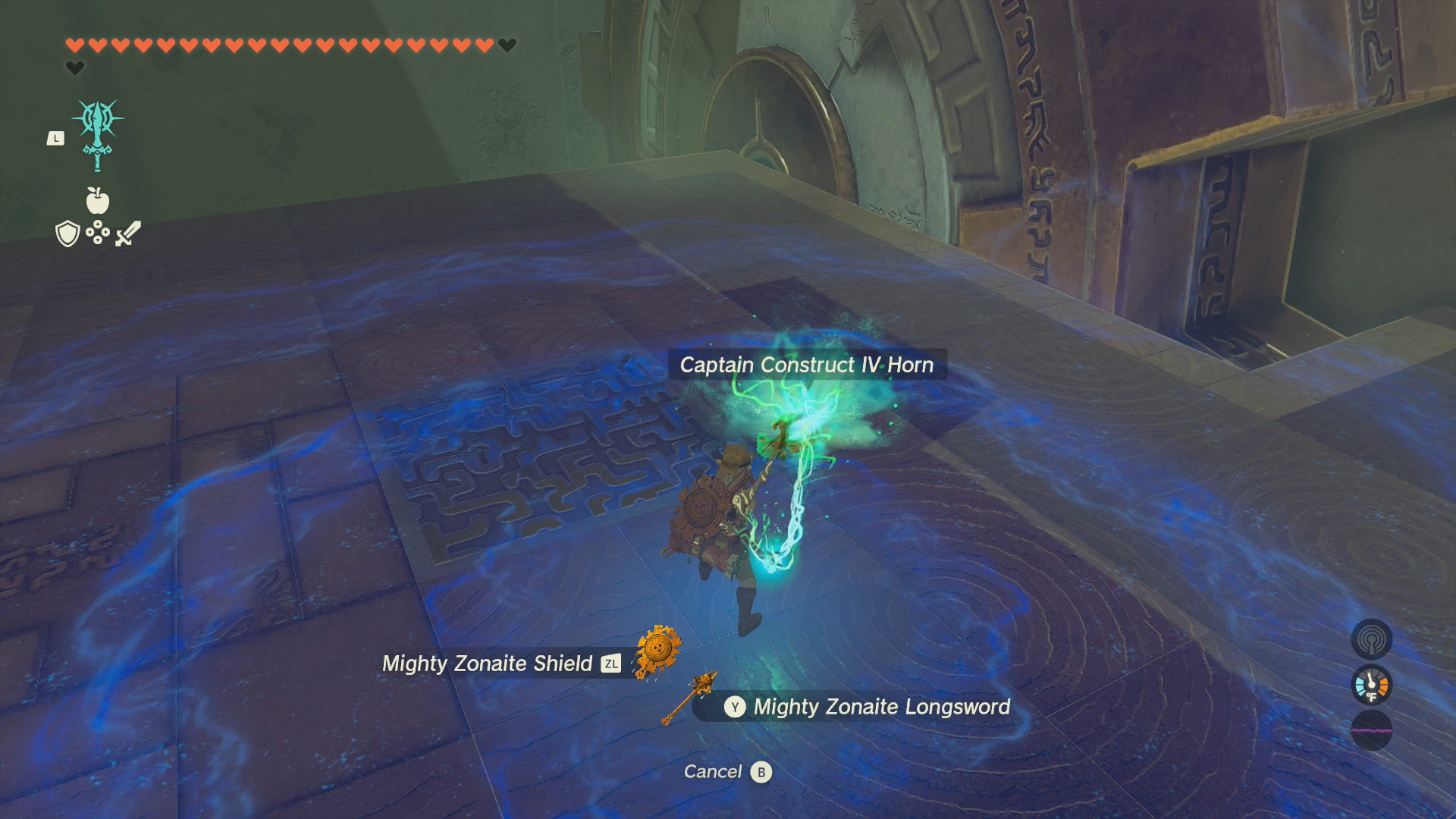
Next we’ll discuss Ultrahand. This is basically an upgraded Magnesis, only it’s not confined to metal. With it you can move and merge different objects together. This is very useful due to all the contraptions you can construct with Zonai devices, such as rockets, air balloons, wings, control sticks, wheels, flamethrowers, and many others, 27 in total. Now that being said, Zonai devices do require a battery to power. Initially your battery will be pitifully small, but if you find enough crystallized charges, it can be upgraded a good deal. We’ll discuss the battery more when I discuss The Depths, as while you can acquire the material necessary to upgrade the battery outside the depths, it’s significantly faster in them.
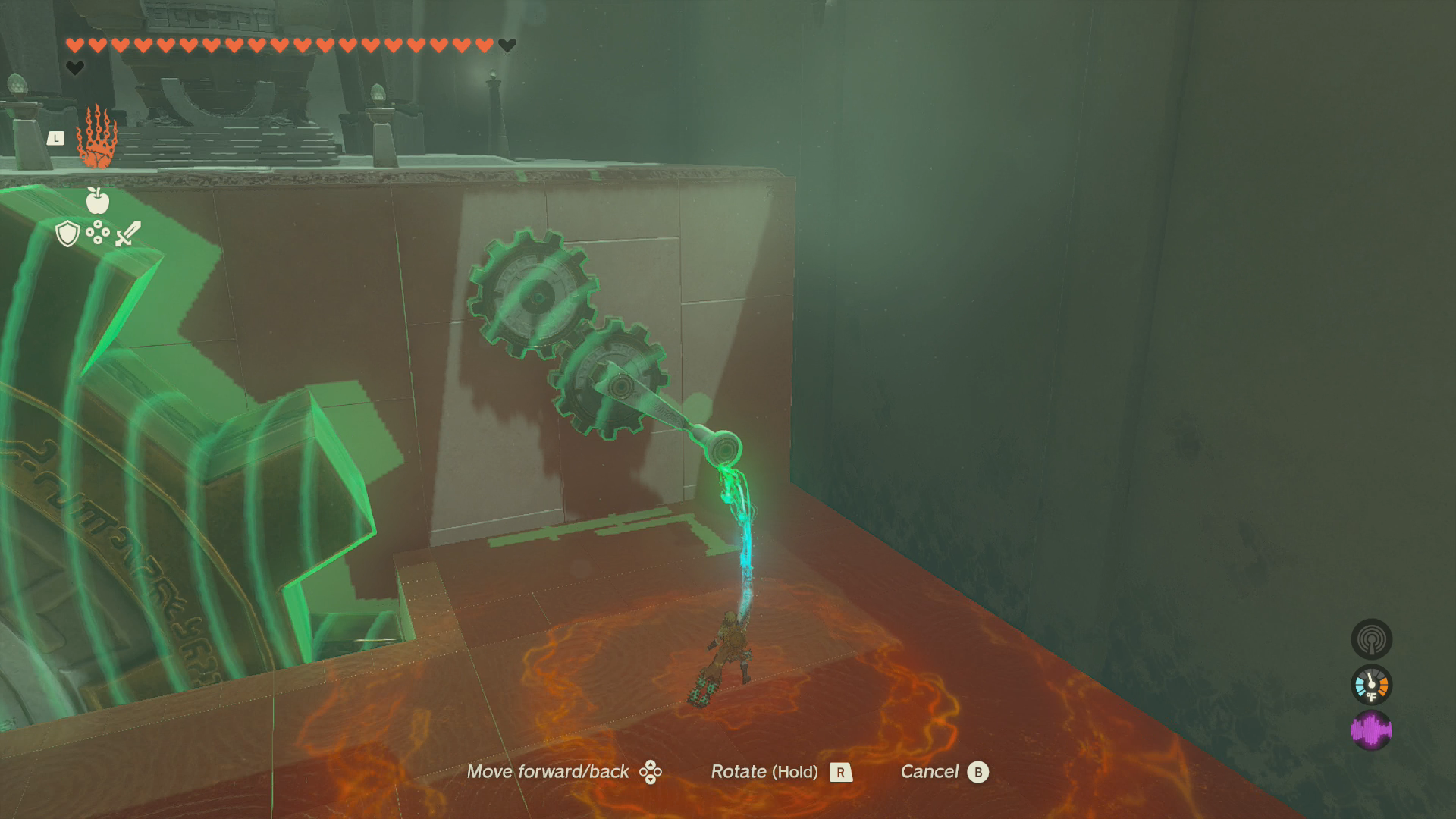
Ascend lets you travel upwards through the ceiling and is quite useful, especially with some bosses, you do have to see a ceiling in order for it to be usable but don’t forget this one. There’s a few puzzles where if you forget about this you will smack yourself in the head.
Autobuild lets you take scrolls of found buildings throughout and make them on the fly or save previous builds/call upon previous builds and is quite useful.
Recall is probably the most situational ability you’ll use. Recall lets you turn back time on specific items, though there’s a time limit. You can use this to get up to sky islands, which will be discussed further shortly.
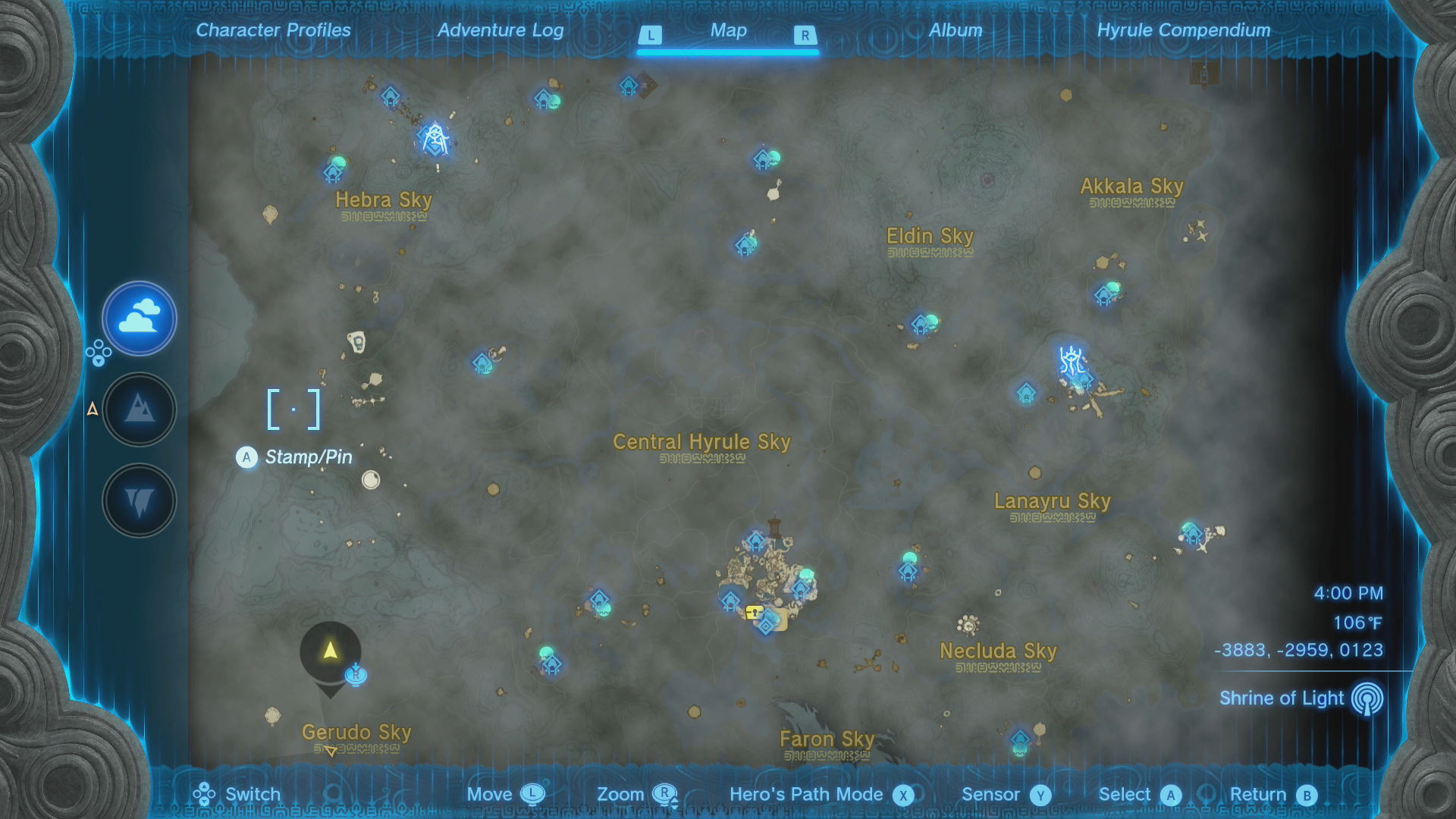
In addition to the regular section of Hyrule that you’re familiar with from BoTW (albeit transformed here and there) there’s two new areas to discuss, both of which are quite large: The Depths and the Sky Islands. Both will be critical for plot progression, item progression… just about everything. We’ll begin with The Depths. While it’s not the first area you explore, it is pretty critical to a lot of the game, although it might not seem like it at first. The Depths are, well… under Hyrule. Ganon has been corrupting under Hyrule and you need to make your way through these dark lands. At first it’s very unnerving to be quite honest. It doesn’t ever fully stop being unnerving, but after your first few sessions within The Depths you get more used to it. The main goal of The Depths is collecting poes to trade in, finding Lightroots to illuminate the area (which, conveniently, are always underneath a Shrine in Hyrule), finding treasure, and a spoiler or two that I won’t mention so as to keep it fresh for you.
By finding Zoanite and then converting it into battery charges, you’ll increase your battery life, which helps with your devices immeasurably. On top of that all, enemies in The Depths cause Gloom damage, which takes away one heart from your max health. This can be healed via returning to the surface, or by standing on a Lightroot. Or food. It sounds scary and it can be depending on the situation but overall it isn’t too bad. And if you happen to encounter a harder enemy in The Depths without having lit that Lightroot? It can be quite an interesting moment.

We also have Sky Islands, which is exactly as they sound: Islands in the sky that appeared after the Zoanite devices started reactivating. As you upgrade that battery more and more from the Depths the easier it will be to get up to the sky islands with Zonai devices, or even move between island to island. Now as stated earlier, you can find chunks of the Sky Islands that have fallen and use Recall to get to one, but some of them are false flags and won’t get you high enough which is where you need to be more creative with devices, or puzzle solving. One of my favorite sections was skydiving through obstacle courses and landing in a pool of water! While I wouldn’t want to do this in real life, I did find it really enjoyable.
There’s probably a lot more from a gameplay perspective that I could talk about, but I think we’ve covered enough. I will say that if they had just had a reskinned Hyrule without the Sky Islands and The Depths, that would have been enough. There’s a ton of content and gameplay here that is always leaving you wanting for more.
Story
I was discussing ToTK’s story with a friend the other week. He thought that ToTK surpassed BoTW’s in every way, and while I can understand where he’s coming from, I think I have to disagree. While I can’t delve too far into this without spoilers, I still say they’re both as good throughout, and just as impactful at the end. What I will say though is that while they try to set up a surprise basically right at the beginning, it’s super obvious and not unexpected by the time it’s revealed. Was it still enjoyable to unravel? Yes, it was. It was actually a lot better to do than BoTW’s, for one simple reason. As with how BoTW had photo locations you needed to find to get the full story of BoTW, ToTK has locations called Dragon’s Tears where it will unravel more of the story for you and provide you with a new story cutscene. The reason I have to edge this one out to ToTK is because of how much easier it is to find the tears. As opposed to the photo locations of BoTW, TotK gives you hieroglyphs that can be seen from far away. Just look for a filled in tear instead of an empty one, and there you go. That one small change does happen to help a lot.
It’s nice to revisit some of your favorite characters as well, seeing how they’ve changed and grown since the last game. They left out the best character though, Kass, which is truly unfortunate. But overall, the story is a really enjoyable time. My one complaint might be the leadup to the finale, without giving spoilers they give you a, “oh, by the way, one more thing” that stands in between you and the end. I’m fairly confident if you wanted, you could skip it much like with BoTW and go directly for the finale.
Link is still the loveable goof that loves food and is there for Zelda and Hyrule, and the new champions are still themselves (mostly, you’ll have to play to find out). And finding most of your favorite characters throughout the world for a new mini quest, or as a big part of the story always made me want to see what was just ahead. I also loved seeing just how the transformed Hyrule’s story played out and all the subtle changes along the way.

Music
As with previous Zelda games, the music is fantastic. Whereas before BoTW used more remixes (and they still do that in TotK, albeit in much more subtle ways) the new music composed for ToTK is phenomenal. The sound design also was well taken into account and while the music is for the most part more subtle than previous Zelda games, it fits the open world of BoTW and ToTK.
Graphics
For a Nintendo Switch game in 2023, the graphics did a phenomenal job. Nintendo definitely pushed as much as they could out of this to make sure it looked as good as possible. Is it going to be as good as the PS5 and Xbox SX? No, but it’s even more impressive in my opinion to take weaker hardware and make it look really polished and good. Everything that needs to be easily visible, ala weapons, pickups, enemies, elements, characters etc etc. are noticeable,and the draw distance most of the time is pretty good. There may have been some hiccups a few times but I don’t remember any egregious examples. In the Sky Islands you can see for quite a ways away, and it was always impressive how good everything looked even from a far distance.
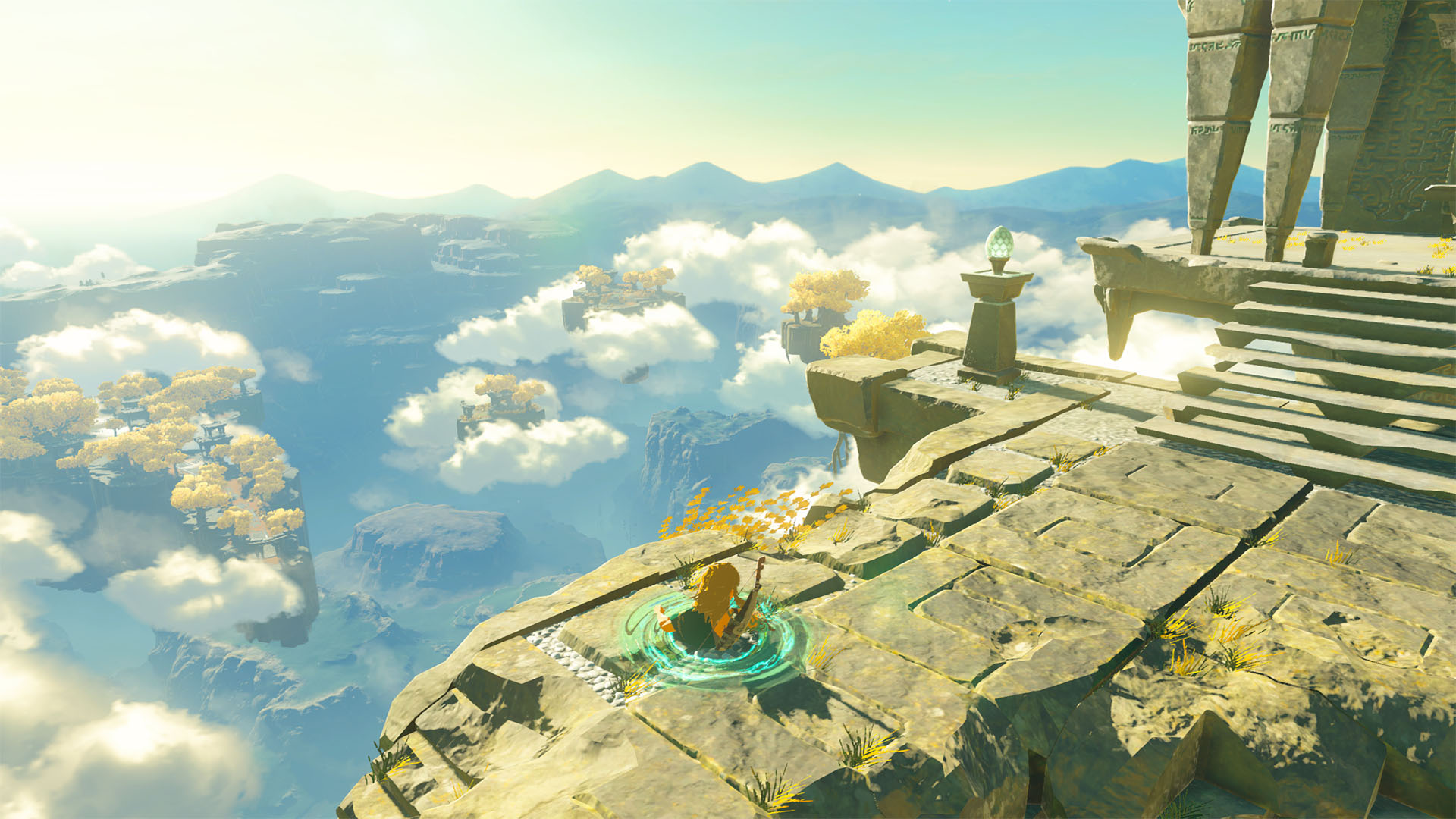
Morality/Parental Warnings
A few things here and there: much like the first game, the demon statue is back that lets you reallocate levels you’ve gained via the goddess statue. Some people may be uncomfortable with these mentions. More egregiously with both of them a Hyrulean says in order for there to be a good goddess, there must also be an evil god, as both entities cannot exist without the other; their power manifests through the other’s existence.
Obviously this is a heresy, and while it was in the first game as well it still might be something that some find discomforting. However, aside from that Ganon is presented as evil, and protecting people is presented as good. However, the overall message does happen to be Catholic, defending the kingdom from something that is trying to destroy the world and Link is a very good example of chivalry.
– There are other gods you interact with like the horse god.
– Some violence, while there’s no blood you do attack enemies with realistic swords and the like, enemies will sometimes drop organs, and there is a cutscene within the main game in which a character gets something forced down their throat.
– In the previous game you did have to cross-dress to enter Gerudo town, that is removed here and while I haven’t seen any crossdressing myself there is a possibility it’s still here, in addition to some female characters (such as the Great Fairies and Gerudos) having cleavage and midriffs.
Conclusion
Overall ToTK is a fantastic follow up to BoTW and while I did say the story was about on par, the new additions to the gameplay as well as the more easy way to discover the rest of the story was an additional welcome. The new enemies, weapon crafting, exploration just everything about this entry pushes it beyond BoTW and has cemented it as one of my top 20 games at the least. I’d need to think further about this to see if it pushes into the top 10.
Scoring: 90%
Gameplay: 4.5/5 Some people may have difficulties with some of the difficulty spikes but I found it added more to it and welcomed them, making you strive to be just a little bit better.
Story: 4/5 A pretty typical Zelda story, not that there’s anything bad about that, if you’re a Zelda fan, you know what you’re getting into and you’ll enjoy it. If you’re not, this is still a decent spot to jump on, but it may be better to play BoTW first for a more complete understanding/ impact.
Sound: 4.5/5 The music is fantastic and as stated I loved the subtle remixes thrown here and there (in particular the Rito Village theme) and all around a good time.
Replayability: 5/5 As previously stated I already want to jump back in, maybe do a challenge run next time, find something new I didn’t last time. A different order, a specific weapon type, many different ways to approach each and every part.